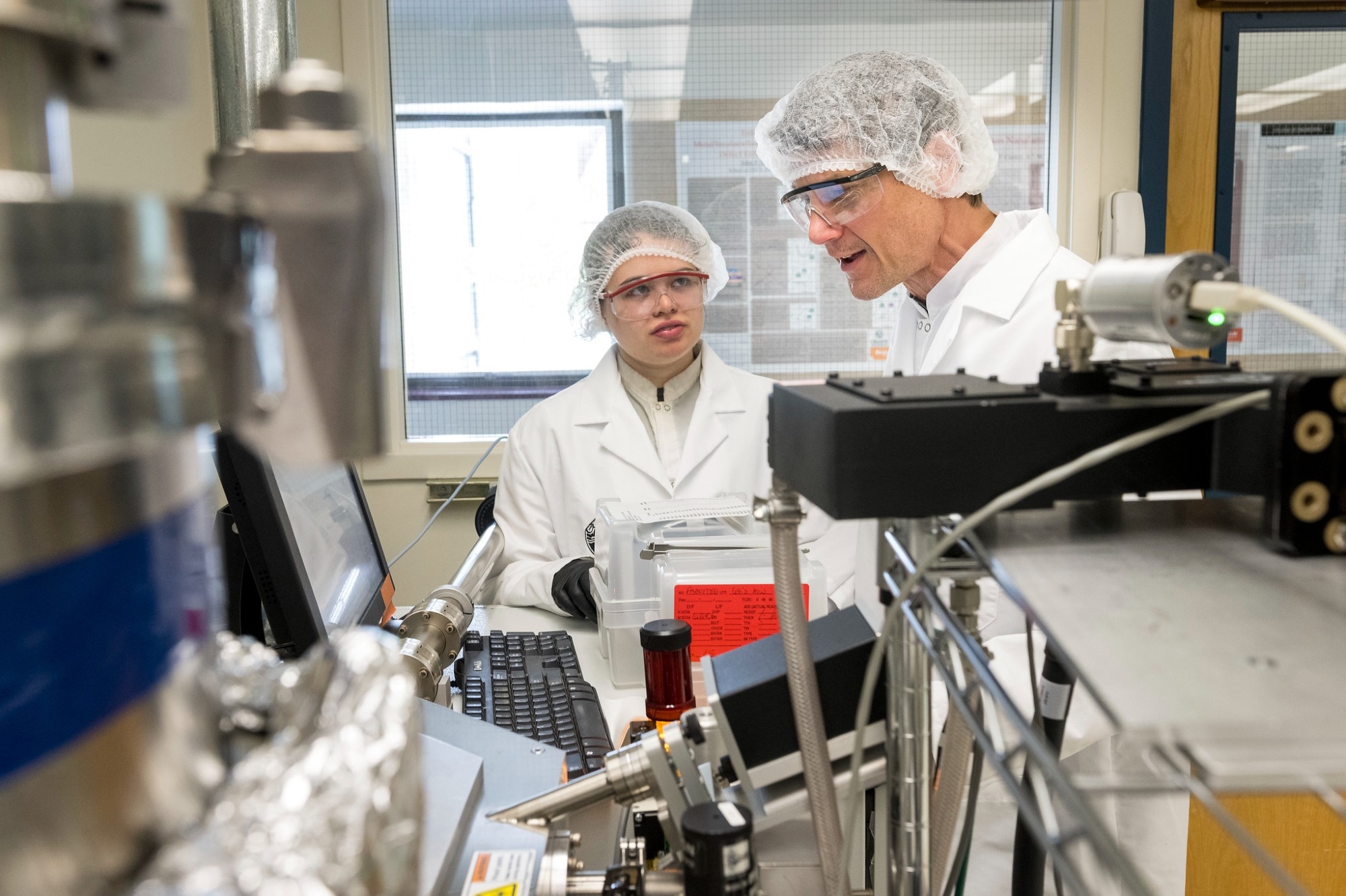Scientists from Oregon State University and Baylor University have made a discovery toward minimizing the energy consumption of the photonic chips employed in supercomputers and data centers.

Ph.D. student Jessica Peterson and Professor John Conley discussing the operation of one of his group’s atomic layer deposition (ALD) systems. Image Credit: Oregon State University
According to the US Department of Energy, the results are essential as a data center can consume a maximum of 50 times more energy per square foot of floor space compared to a normal office building.
A data center caters to the IT operations and equipment of an organization; it processes, stores, and disseminates applications and data. The DOE states that the data centers account for approximately 2% of all electricity consumption in the US.
As per the US International Trade Commission, the number of data centers has increased quickly as information demand has increased. In the US, which is an abode for several companies that generate and use huge quantities of information, such as Amazon, Facebook, Google, and Microsoft, there are over 2,600 data centers.
The progress by John Conley of the OSU College of Engineering, former Oregon State colleague Alan Wang, now of Baylor, and OSU graduate students Wei-Che Hsu, Ben Kupp, and Nabila Nujhat includes a novel, ultra-energy-efficient approach to recompense for temperature differences that degrade photonic chips. Those chips “will form the high-speed communication backbone of future data centers and supercomputers,” Conley added.
The circuitry in photonic chips utilizes photons—light particles—instead of the electrons that course via traditional computer chips. As the photons travel at the speed of light, they facilitate the exceptionally quick, energy-efficient transmission of data.
The problem with photonic chips is that, so far, considerable energy has been needed to retain their performance and keep the temperature stable. Nevertheless, the research group headed by Wang has exhibited that it is able to minimize the energy required for temperature control by a factor of over 1 million.
Alan is an expert in photonic materials and devices and my area of expertise is atomic layer deposition and electronic devices. We were able to make working prototypes that show temperature can be controlled via gate voltage, which means using virtually no electric current.
John Conley, College of Engineering, Oregon State University
Currently, Wang said, the photonics industry solely depends on components called “thermal heaters” to adjust the working wavelengths of high-speed, electro-optic devices and regulate their performance. These thermal heaters use several milliwatts of electricity for every device.
That might not sound like much considering that a typical LED lightbulb uses 6 to 10 watts. However, multiply those several milliwatts by millions of devices and they add up quickly, so that approach faces challenges as systems scale up and become bigger and more powerful.
Alan Wang, Oregon State University
Our method is much more acceptable for the planet. It will one day allow data centers to keep getting faster and more powerful while using less energy so that we can access ever more powerful applications driven by machine learning, such as ChatGPT, without feeling guilty.
John Conley, College of Engineering, Oregon State University
The study was funded by Intel, NASA, and the National Science Foundation and was reported in Nature Scientific Reports.
Journal Reference
Hsu, W.-C., et al. (2023). On-chip wavelength division multiplexing filters using extremely efficient gate-driven silicon microring resonator array. Scientific Reports. doi.org/10.1038/s41598-023-32313-0.